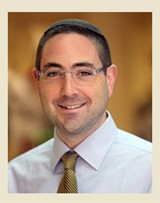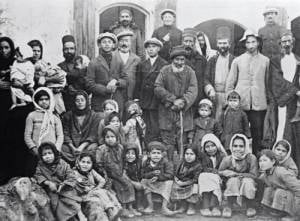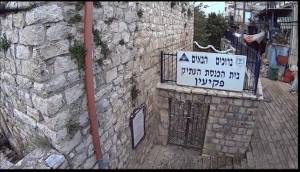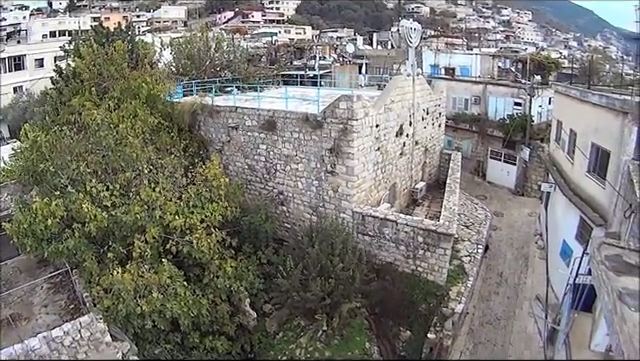
By Rabbi Ari Enkin, rabbinic director, United with Israel
Approximately 60,000 tourists visit the Druze village Peki’in each year. It is also where the sage Rabbi Shimon Bar Yochai and his son hid from the Romans in the 2nd century.
The minor holiday of Lag b’Omer marks the day on which Rabbi Shimon Bar Yochai died. Rabbi Shimon bar Yochai is credited with writing, or at least contributing towards, the mystical Zohar, as well as revealing many other secrets of the Kabbalah. He asked that his yartzeit, the anniversary of the day of his passing, be an annual day of celebration.
The Talmud tells us that Rabbi Shimon bar Yochai was a fierce critic and opponent of the Roman government of the time. As such, he was forced to go into hiding, along with his son, for 13 years. According to tradition, they hid in a cave in the city of Peki’in in northern Israel. We are told that they survived due to a carob tree that miraculously grew at the mouth of the cave (according to some sources, the tree would provide dates on Shabbat!) and a spring of fresh water that flowed at its side. One can still see a large and ancient carob tree at the entrance of the cave, possibly the very same tree from which Rabbi Shimon and his son ate!
In order not to wear out their clothes, Rabbi Shimon and his son would wear them only during prayer, while at all other times they would remove their clothes and immerse themselves in sand up to their necks while they studied the Torah all day long. They left the cave once and for all when they heard that the Roman emperor had died and that, by extension, their lives were no longer in danger. Over the years most of the cave had become sealed off and only the entrance area is accessible nowadays.
The History of Peki’in
Today Pekiin is a Druze village of approximately 5,500 people in the Upper Galilee. Peki’in is a story of harmony and co-existence. It is a place where Christian Arabs, Druze and Jews have generally lived peacefully together throughout the centuries. The one Jewish woman remaining in Peki’in today is reportedly part of an unbroken chain of Jews who have lived there since the destruction of the Second Temple.

Jews of Peki’in c. 1930 (Wikimedia)
Peki’in has been a sleepy farming village for over 2,000 years. Arab settlement in Peki’in started in the 11th century with Arab Christians who were joined a century later by Crusaders. In the 18th century, Druze families moved into the village. The village offers a number of charming alleyways that lead to the old center of town and the village spring. Nearby is a synagogue built in 1873 which contains two stones reportedly taken from the Holy Temple in Jerusalem. The synagogue can be visited by booking a tour in advance.
In the 16th century, Peki’in was registered as a village with 77 Muslim and 70 Jewish families. The villagers worked raising goats, bee-keeping, silk-spinning, wine-making and producing olive oil. In 1875, French explorer Victor Guérin visited the village and described it as follows: “The population at present numbers 600 Druze, United Greeks, Schismatic Greeks and a few Jewish families…. Every year in the summer several hundred Jews come here from Tiberias to pass the hot season…. Thanks to the two springs which issue from the hillside, they cultivate on the slopes and almost to the bottom of the valley delicious gardens, watered by numerous streams. Here grow…fruit-trees of all kinds, such as citrons, oranges, pomegranates, figs, quinces and mulberries. The vine flourishes marvelously, as is shown by the enormous trunks…. The Jews worship in a synagogue of modern date.”

Sign says: Welcome to Old Synagogue of Peki’in (Youtube)
In 1881, the Palestine Exploration Fund’s Survey of Western Palestine described Peki’in as “a good village, built of stone, containing a chapel and a synagogue. There are about 100 Moslems, 100 Christians, 100 Druze and 100 Jews. It is situated on the slope of tiny hill, with gardens, figs, olives, pomegranates and arable land.”
In 1922 the British authorities conducted a census revealing a population of 652: 70 Muslims, 63 Jews, 215 Christians, and 304 Druze. The 1931 census showed a population of 799: 71 Muslims, 52 Jews, 264 Christians and 412 Druze, in a total of 190 houses. The Arab riots of 1936 forced the Jews of Peki’in to leave their homes for safer parts of the country. Only a few returned.
Popular Tourist Site
In July 2006, Peki’in was hit by Katyusha rockets launched by Hezbollah, causing significant damage to homes and orchards.
Approximately 60,000 tourists visit Peki’in each year. The tourist trade supports local restaurants and specialty shops. The town also has a hotel and youth hostel. There are many guesthouses, special restaurants, colorful shops, a factory that makes soap from olive oil and, most important, many friendly people. Of course be sure to visit the ancient synagogue and Rabbi Shimon’s cave next time you’re there!

Free Ebook: 10 Best Places to Visit in Israel
The Land of Israel has provided the backdrop for some of the most important events in human history. From the Old City in Jerusalem to the Sea of Galilee, people from all over the globe visit the Holy Land each year to take in the breathtaking scenery and inspiration of Israel. Now you can experience this beauty for yourself from the comforts of home and maybe plan a trip of your own to Israel. Get the free, exclusive eBook from United with Israel: The 10 Best Places to Visit in Israel.
